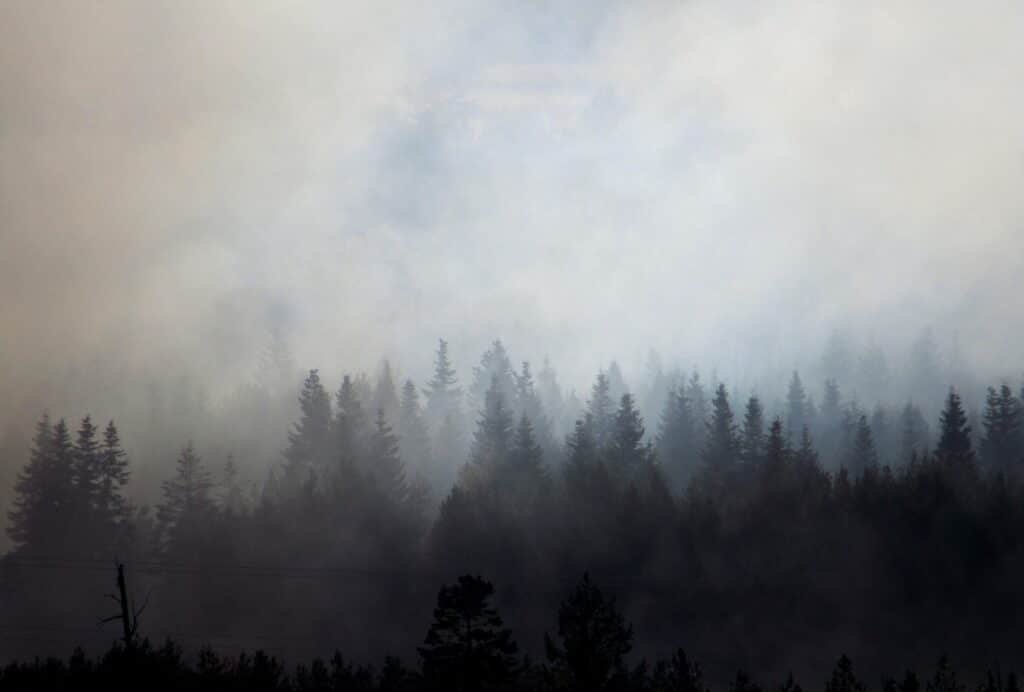Last year’s devastating wildfires put a dent in the world of cannabis cultivators. Unfortunately, it doesn’t look like this year will be any different for them.
The Effects of Wildfires on Recreational and Medical Marijuana
Wildfires affect millions of acres of land, deal heavy blows to certain wildlife populations, and drastically affect the cannabis industry. Marijuana cultivators in Oregon and California had the worst of it last year, and with the smoke and ash blocking out the sun for outdoor cultivation sites, farmers were left with less than ideal options to remediate the issues. While this primarily impacts cultivators on the west coast, wildfires are prone to happen anywhere.
“Typically, heavy smoke or particulate exposure degrades the product quality to such a degree that most people won’t knowingly purchase it,” said Linda Abernethy, the director of cultivation science for Steep Hill Labs. “As fires continue to affect cultivators across the state, I’m sure we’ll see products (especially flower) fail regulatory testing—like filth and foreign materials testing due to the presence of ash, cinders, dirt, and mold. Don’t lose hope though—if your crop has been affected by fire exposure, there are a few remediation routes to making successful, market-appropriate products.”
One of those solutions is prevention and treatment of contaminants. “It could be everything from a low-level of contamination and cleaning required, where you have to go in and just wipe down your walls and get rid of all your plants and clean out your hydroponic systems … or whatever … different components that could absorb soot and smoke, all the way to heavy contamination which requires pressure washing, replacing drywall, replacing ceiling tiles—replacing anything that absorbs large amounts of contaminants,” Abernathy stated. The degree to which extra measures must be taken impacts operational efficiencies of the facility, creating additional day-to-day protocols for workers.
How Can Soot Affect Your Marijuana Cultivation?
Last year, 58,950 wildfires burned an estimated 10.1 million acres of land in the US. That’s double the amount burned in 2019 and is more than the 10-year-average. The U.S. Drought Monitor’s latest outlook showed that much of the area in which cannabis is being grown in the West and Southwest are going to be put through prolonged drought conditions. This can lead to pasture loss, unstable crop growth, and water emergencies. As much deterioration as this has brought cultivation harvests, residents of these areas also have problems to worry about, such as air quality.
Willow Creek, California reported that their air-quality readings had reached almost three times the level at which breathable air is considered hazardous. Last year, the town had reported 24-hour average air-quality measures that ranged from 50 to 650 micrograms per cubic meter. Anything over 55.5 is considered unhealthy air which humans should not breathe. If hazardous readings are higher than 250 for a prolonged period of time, the Environmental Protection Agency recommends closing events, workplaces, and even schools.
Jon Vaught, the CEO of Front Range BioSciences went on to say that, “When you start getting into how [it’s] going to affect product and manufacturing and production, it depends on where the wind’s blowing, what your situation is, where you’re located. You could be right next to a fire and have no issues at all, or you could be ten miles from it and have your building filled with smoke. It really just depends on the weather.”
Smoke is generally a volatile substance to the cannabis plant and causes a significant degree of stress to its grow process. This is especially common in those with outdoor or greenhouse operations. The residue, soot, smog, and smoke can also leave behind problems for lab testing and consumer health. But, implementing proper sanitation measures as Abernathy suggests, or hiring an experienced contractor or consultant to find the optimal solution for your case, is the best place to start.
Josh Wurzer, president of SC Labs, had this final note to say about the crop damage that accompanies wildfires, “Smoke taint is the most obvious and the most apparent threat to cannabis as [it’s] exposed to these forest fires, and that’s something you’re going to be able to readily tell from just qualitatively examining the cannabis. So, that’s certainly a concern—just ruining the flavor of the cannabis.” Marijuana enthusiasts can collectively share information about issues facing the cannabis industry and consumer community can ban together and
contribute to the larger conversation of cannabis activism.
Additional Resources:
At The Weed Blog, we strive to produce the latest online news resources regarding marijuana. We also review various strains of cannabis or other edible counterparts. We are committed to helping you find valuable information about marijuana on our website. With marijuana laws constantly changing, learn from us what you can do to promote activism in your area. Otherwise, consider these other top-tier articles regarding cannabis:





